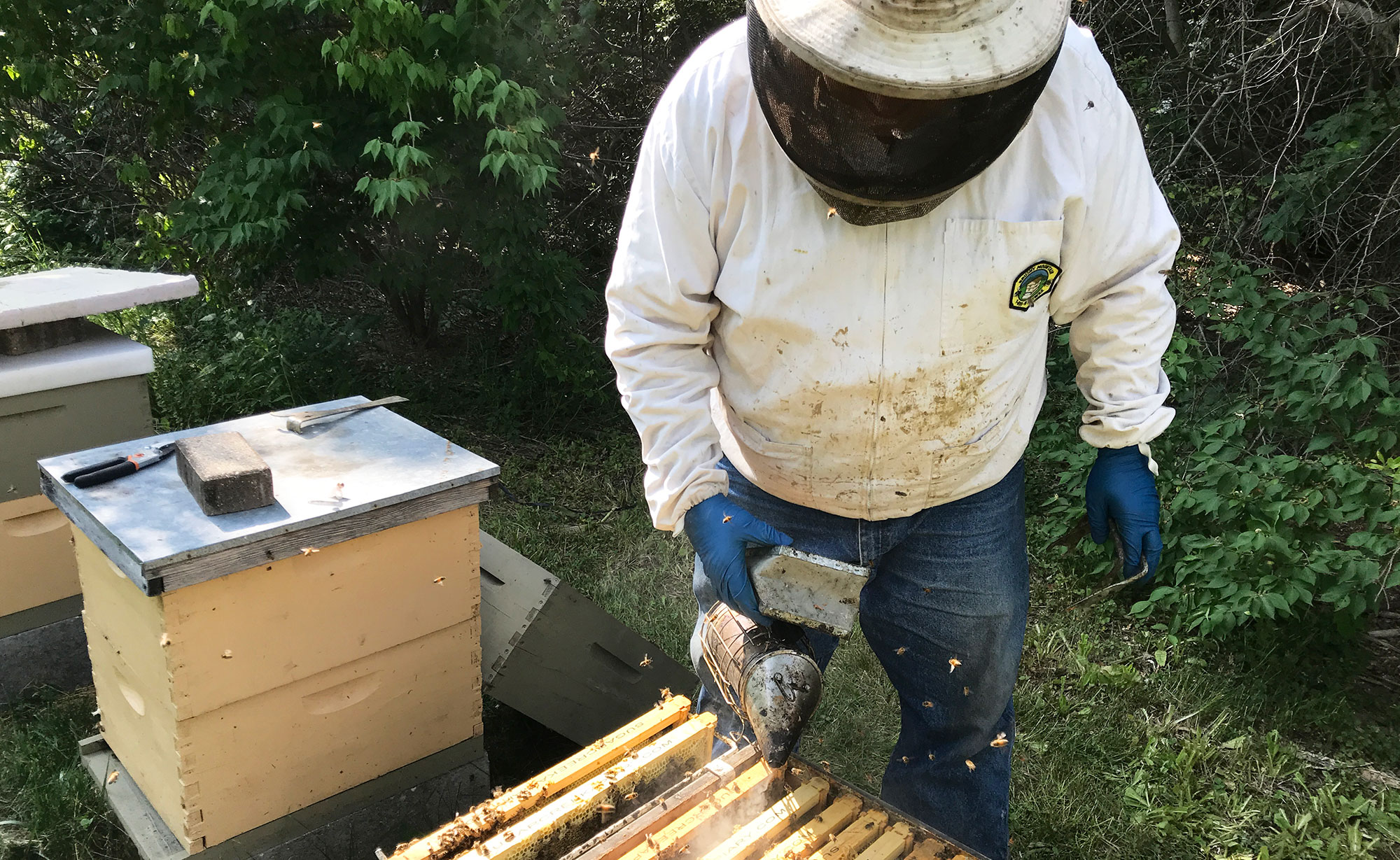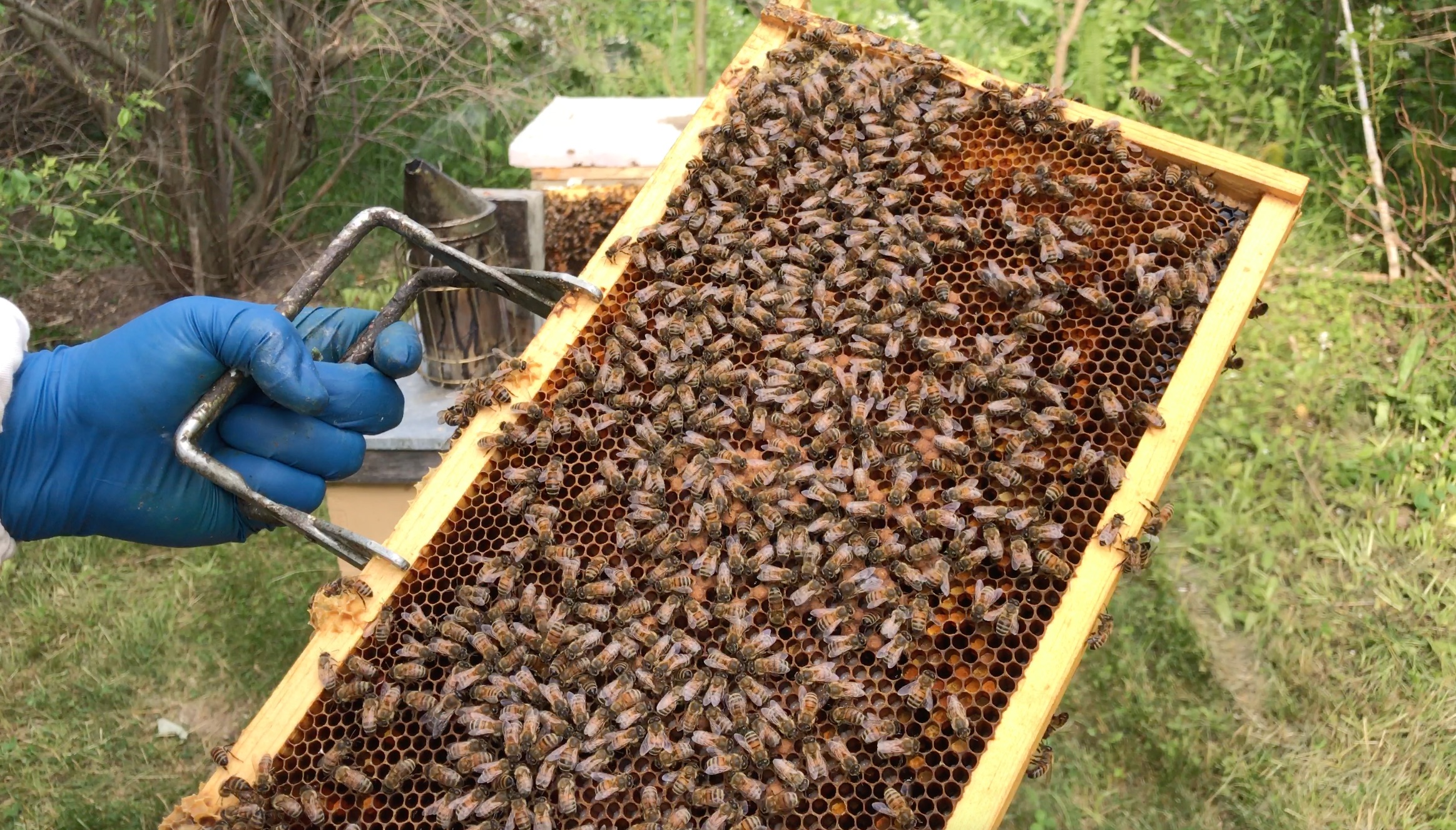| Story by Meghan McMahon |
6/28/2018
In a roundabout sort of way, Mike Rusnak’s love of wild mushrooms eventually led him to an even greater passion – bees and beekeeping.
He loved hunting for wild mushrooms so he figured he would plant an apple orchard and, if the apple trees died, at least he would get some morels for his efforts. To plant the apple trees, though, he needed honeybees to help pollinate the apples. In the end, deer ate all of his apple trees, but in the ensuing time he became hooked on the bees.
“It’s just a really peaceful endeavor,” he said of the bees and beekeeping. “It’s relaxing.”
He has been beekeeping for more than 15 years now and, at one point, he had about 100 hives. Today, though, he has 50 hives spread across seven locations in four Illinois counties, including Will County at the Plum Creek Nature Center, where he serves as the resident beekeeper and holds educational programs throughout the year.
(Click and drag your mouse to explore all angles of the beehive. Note: 360-degree experience may not work on all browsers)
For Rusnak, beekeeping remains just a hobby – he has a full-time job apart from the bees – but he does hope to be able to devote more time to it once he retires. In the meantime, he’d like to keep his hive count right around 50, which requires several hours a week to maintain.
He estimates spending about 15 minutes per week per hive, although he said he doesn’t have to visit all the hives every week. Instead, he averages a visit to each hive about every 10 days.
As with many things in life, the efforts you put into beekeeping have a direct effect on the outcome, Rusnak explained.
“The more you put into it, the more you’re going to get out of it,” he said.

)
)
)
)